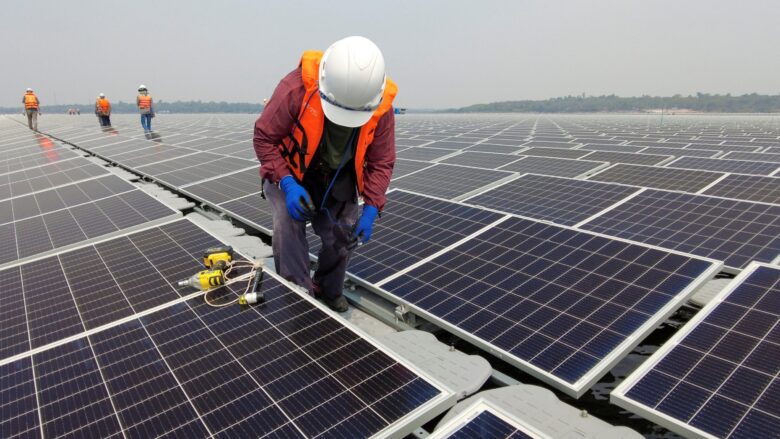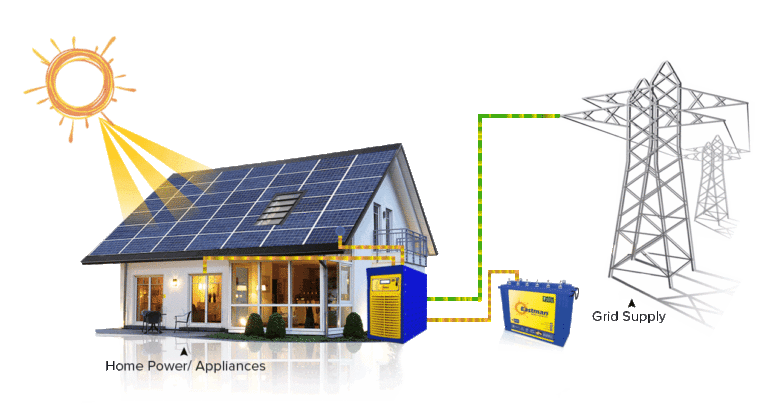In the scorching deserts of Arakis, where sands stretch endlessly and the relentless sun reigns supreme, a tale of harnessing the power of the mighty star is whispered among the dunes. Just as House Martell and the Sun Spear of Dorne mastered the unforgiving desert with unwavering determination, so too can you, dear reader, harness the brilliance of our sun to power your world.
But, let’s get back to reality and say: hey there, eco-warriors and energy enthusiasts! If you’re on a quest for the best solar panels to harness the power of the sun, you’ve landed on the right digital turf. Solar energy is the future, and choosing the right solar panels can make all the difference. Let’s dive into the solar universe and explore the best solar panels that might just light up your life.

Source: asia.nikkei.com
Contents
- Monocrystalline Marvels
- Polycrystalline Powerhouses
- Thin-Film Trailblazers
- Bifacial Wonders
- Tracking Systems: Follow the Sun’s Dance
- Energy Storage Solutions
- Government Incentives and Rebates
- Environmental Impact
- Maintenance and Longevity
- Installation and Professional Assistance
- Monitoring and Efficiency Tracking
- Future Trends in Solar Technology
- Conclusion
Monocrystalline Marvels
Picture this: sleek, black solar panels silently soaking up sunlight like cosmic sponges. That’s the elegance of monocrystalline solar panels. These bad boys are made from a single crystal structure, which means they are incredibly efficient at converting sunlight into electricity. Plus, they are space-savers – perfect for those of us with limited rooftop real estate.
Polycrystalline Powerhouses
Now, if you’re looking for a budget-friendly option without compromising too much on efficiency, say hello to polycrystalline solar panels. Unlike their monocrystalline cousins, polycrystalline panels are made from multiple crystal structures. Sure, they may not be as sleek, but they get the job done without breaking the bank. So, if you’re all about value for money, these might be the solar panels for you.
Thin-Film Trailblazers
If aesthetics and flexibility are your top priorities, thin-film solar panels might steal the spotlight. These panels are as thin as a wafer and can be integrated seamlessly into various surfaces. Think solar windows, solar shingles, or even solar backpacks. While thin-film panels may not be as efficient as their crystalline counterparts, their versatility is unmatched. Embrace the future with solar technology that blends seamlessly into your life.

Source: energytheory.com
Bifacial Wonders
What if solar panels could catch sunlight from both sides? Enter bifacial solar panels – the unsung heroes of energy absorption. These panels have a reflective surface on the rear, bouncing back sunlight onto the front, boosting overall efficiency. If you have a highly reflective environment, like a snowy landscape or a shiny rooftop, bifacial panels can be a game-changer. It’s like getting a bonus round of solar power.
Tracking Systems: Follow the Sun’s Dance
Let’s spice things up a bit. Imagine your solar panels swiveling and tilting throughout the day, tracking the sun like an obsessed sunflower. That’s the magic of solar tracking systems. While not a type of solar panel per se, pairing your panels with a tracking system can significantly boost efficiency by optimizing the angle at which they catch sunlight. It’s like giving your solar setup a personal assistant – ensuring it’s always in the sun’s sweet spot.
Energy Storage Solutions
Energy storage plays a crucial role in maximizing the efficiency of solar panels. By storing excess energy produced during peak sunlight hours, homeowners can use it during times of low sunlight or high energy demand. Batteries, especially lithium-ion types, have become popular due to their high efficiency, long life, and compact size. These storage solutions enhance energy independence, allowing homeowners to rely less on the grid and more on their own solar production. The integration of storage with solar panels is a game-changer, enabling a steady and reliable energy supply regardless of external conditions.

Source: medium.com
Government Incentives and Rebates
To encourage the adoption of solar panels, many governments offer financial incentives. These incentives can significantly reduce the upfront cost of installation. Tax credits, rebates, and incentives vary by location but can cover a substantial portion of the initial investment. Homeowners should actively research and take advantage of these incentives. Understanding the local incentives available can make solar panels a much more attractive and viable option financially.
Environmental Impact
Solar panels have a profoundly positive impact on the environment. By harnessing the sun’s energy, they produce clean, renewable power, significantly reducing greenhouse gas emissions. Unlike fossil fuels, solar energy does not release harmful pollutants into the atmosphere. The widespread adoption of solar panels can lead to a substantial reduction in our carbon footprint, contributing to a healthier planet. Sharing statistics and real-world examples of solar power’s positive environmental impact can further highlight its benefits.
Maintenance and Longevity
Proper maintenance is key to maximizing the performance and lifespan of solar panels. While solar panels are known for their durability and longevity, regular cleaning and inspection are essential. Dust, debris, and other obstructions can reduce efficiency. Homeowners should ensure their panels are clean and that there are no shaded areas blocking sunlight. Professional maintenance checks can also help identify and address any potential issues early, extending the life of the system.

Source: blogbeats.com
Installation and Professional Assistance
The importance of professional installation cannot be overstated. A properly installed solar panel system ensures maximum efficiency and safety. When selecting a solar panel installation company, homeowners should consider factors like experience, certification, and customer reviews. Seeking professional assistance ensures that the system is correctly sized, appropriately angled, and securely mounted, maximizing the solar panels’ energy production and longevity.
Monitoring and Efficiency Tracking
Monitoring systems for solar panels are essential tools for homeowners. These systems track energy production and panel performance, providing valuable insights into the efficiency of the solar setup. By understanding their system’s output, homeowners can make informed decisions about energy use and system upgrades. Popular monitoring tools and services offer user-friendly interfaces and real-time data, making it easier than ever for homeowners to keep tabs on their solar investment.
Future Trends in Solar Technology
The solar industry is rapidly evolving, with exciting new technologies on the horizon. Innovations like solar paint, transparent solar panels, and solar-powered electric vehicle charging stations are set to revolutionize the market. Solar paint, for instance, offers the potential to turn any surface into an energy-harvesting medium, while transparent solar panels combine functionality with aesthetics, opening up new possibilities for integration into buildings. Staying informed about these advancements allows homeowners to make the most of their solar investments and contribute to a more sustainable future.

Source: pv-magazine-usa.com
Conclusion
In the vast galaxy of solar panels, there’s no one-size-fits-all solution. Your choice depends on your priorities – whether it’s efficiency, affordability, aesthetics, or a mix of everything. Monocrystalline panels for the efficiency purists, polycrystalline for the budget-conscious, thin-film for the trendsetters, bifacial for the environment with lots of light bouncing around, and tracking systems for those who want to squeeze every drop of sunlight.
As you embark on your solar journey, remember: it’s not just about generating electricity; it’s about embracing a cleaner, greener future. So, pick the solar panels that resonate with your values, and let the sun illuminate your path to a brighter, sustainable tomorrow. Happy solar hunting!
